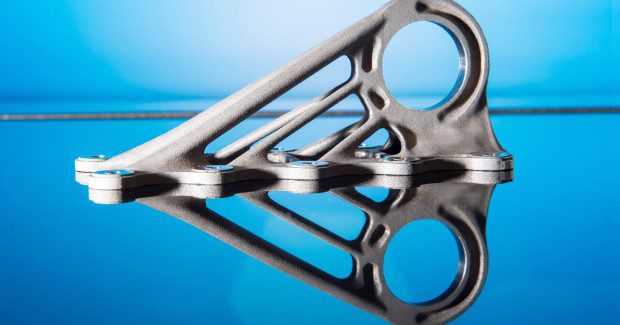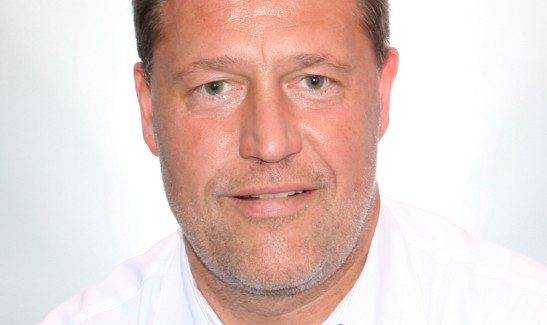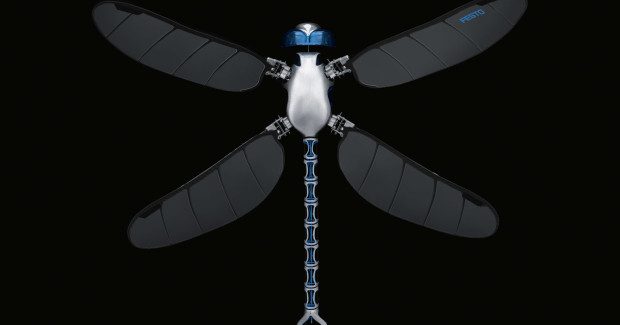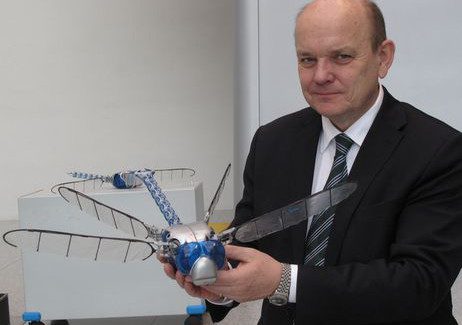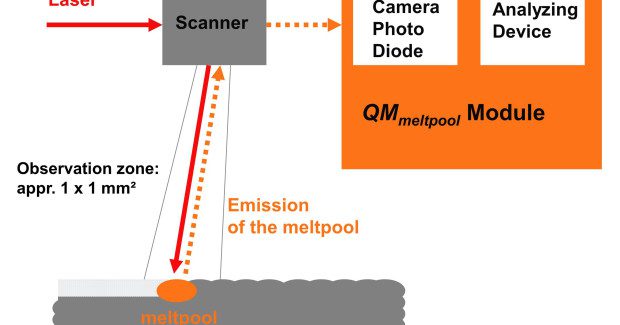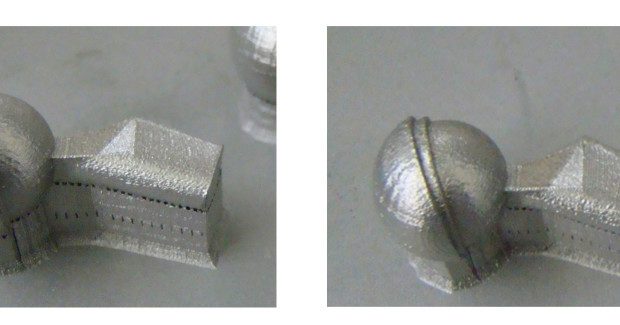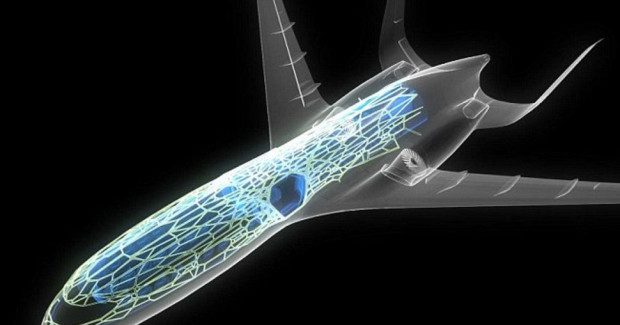Bionics and the Future of Flight
Of all the advances taking place in the aerospace industry, none holds more promise than additive manufacturing, a disruptive mother lode of quicker throughput, more cost-effective components, and unimaginable freedom of design in lightweight construction and function integration.
Posted: January 6, 2016
“Previously we budgeted around six months to develop a component. Now it's down to one month.” (Photo courtesy of Airbus)
“I see great potential in particular for structural components with dimensions of up to one meter, as well as for engine components.” (Photo courtesy of Laser Zentrum Nord)
“Additive manufacturing is a green technology that improves the often discussed environmental footprint of production.” (Photo courtesy of Concept Laser)
“We assembled the BionicOpter during the daytime and tested. If we had failures, we could redesign the parts and print them overnight using a 3D printer.”
Passenger aircraft remain in use for a very long life cycle of more than 30 years. Planes are exposed to diverse and extremely complex load spectra in flight operations. Along with basic static stresses, aircraft are exposed to extreme temperature fluctuations during ground and flight operations. Continuous stresses that demand maximum performance from the affected parts are determining factors. These include takeoffs and landings, as well as flight operation, with permanent turbulence that can lead to several meters of deflection at the wing tips. However, only static load cases are initially relevant to designing retaining structures (brackets).
Profitable manufacturing of aircraft components to meet such critical demands can be challenging. That’s precisely why, of all the advances taking place in the aerospace industry, none holds more promise than the disruptive mother lode of additive manufacturing. With quicker throughput times, more cost-effective components and previously unimaginable freedom of design, additive manufacturing is gaining increasing importance in aircraft manufacturing, where emerging lightweight and bionics trends are changing the way engineers think about design. In aircraft design, future components produced through additive manufacturing will be able to absorb specific lines of force, yet still be able to fulfill the demands of lightweight construction methods. At the same time, sustainability and resource conservation will contribute to overall improvements in cost structures.
NEW DESIGN APPROACHES FOR AIRCRAFT STRUCTURAL ELEMENTS
The arguments for additive manufacturing in aircraft construction are geometric freedom and weight reduction. Lightweight construction is intended to help airlines operate their aircraft more economically. For example, a new aircraft design requires thousands of Flight Test Installation (FTI) brackets that are produced in very small unit quantities. Additive layer manufacturing allows designers to create new bracket structures that are over 30 percent lighter than conventional cast or machined parts. Reducing the weight of all these brackets tends to lower fuel consumption or potentially increase the load capacity of aircraft.
Because CAD data replaces hard tooling as the direct basis for an additive construction job, costs are reduced and the time until the bracket is available for use is shortened by up to 75 percent. The omission of tooling makes it possible to produce functional bracket samples at an early stage that are similar to production components without upfront costs for tooling. Sources of error can be identified early in the design stage to optimize processes within the whole project. “Previously we budgeted around six months to develop a component. Now it’s down to one month,” says Peter Sander, the head of emerging technologies and concepts at Airbus Group SE (Toulouse, France).
RESOURCE CONSERVATION
Conventional milling of aircraft parts results in up to 95 percent recyclable waste. With additive manufacturing, the machining center receives components with near-final contours, so the milling process produces only around five percent waste. “In aircraft manufacturing, we work with the ‘buy to fly’ ratio, and 90 percent is a fantastic figure. This value is also reflected in the positive energy balance,” explains Dr. Claus Emmelmann, the chief executive officer of Laser Zentrum Nord GmbH (Hamburg, Germany). This makes the process especially attractive when using valuable and expensive aircraft materials, such as titanium. A tool-less manufacturing strategy saves time and improves the cost structure. Targeted energy consumption and conservation of resources are key features of the additive manufacturing process. “This is a green technology that improves the environmental footprint of production,” states Frank Herzog, the chief executive officer and president of Concept Laser GmbH (Lichtenfels, Germany).
AIRCRAFT CONSTRUCTION: AN ENGINE OF CHANGE
Generally speaking, additive manufacturing has a positive effect on production costs for small to medium-sized unit quantities. “Batch size considerations are more essential in aircraft construction than in volume manufacturing in order to achieve economies of scale,” says Sander. For example, the comparatively higher relative investment costs for casting molds are eliminated, as well as any costs for tools that may be required. In addition, laser additive manufacturing offers greater design freedom than conventional manufacturing strategies so that undercuts and interior channels for cooling can be produced. In aviation, aircraft manufacturers already think about cooled elements for electronics or intelligent, hydraulic components. “I see great potential, in particular, for structural components with dimensions of up to one meter, as well as for engine components,” notes Emmelmann.
Joining methods for increasing component size up to the limits of physics are not hard to imagine. The real competitive advantage is that previously unimaginable geometries can be combined with functionalities for the first time. The flow of forces in the component can already be determined very accurately in the CAD design. This means additive manufacturing technology can develop safety-related components that are better, lighter and more durable than the components available today, with slightly different material properties. “Materials produced by this process have greater rigidity while, at the same time, less ductility. This can be enhanced with the right heat treatment,” explains Emmelmann.
SPARE PARTS SUPPLY 2.0: TIMELY, DECENTRALIZED AND ON DEMAND
Spare parts constitute a future playing field for additive aeronauts who will be able to manufacture spare parts on demand in decentralized locations without the need for tools. In the event of a component failure, the spare part can be produced directly where it is needed. Decentralized production networks may be formed around global and regional strategies to minimize transport distances and delivery times. This will reduce maintenance-related downtime and inspection time for aircraft. In the near future it will be possible to significantly reduce large spare parts depots that carry rarely used parts that are currently essential due to the long life cycles of today’s aircraft. A reduced capital commitment increases flexibility and especially the time needed to obtain safety-related components – especially attractive given the cost pressures in the aviation industry.
BIONICS IN COMPONENT OR PRODUCT DESIGN
Over time, nature has produced optimized functional and lightweight construction principles that minimize the amount of resources required in clever ways. Airbus is currently analyzing solutions found in nature with regard to their applicability. By relying on the “intelligent exposure strategies” of the laser, the aircraft manufacturer can apply layers to a component in a strategic manner in order to produce custom properties in terms of structure, rigidity and surface quality. Laser melting with metals produces extremely fine, even bone-like porous structures. Emmelmann believes this means future aircraft parts will have a ‘bionic’ look. “The first prototypes showed the great potential of a bionically-motivated approach involving all relevant safety requirements,” says Sander. “The process is expected to launch something of a paradigm shift in design and production.”
The evidence of this paradigm shift is on full display in the BionicOpter, a flying drone designed and built by Festo AG & Co. KG (Esslingen am Neckar, Germany) that was inspired by the dragonfly. The BionicOpter is a truly amazing robot design inspired by nature. The 17.3 in long dragonfly drone can flutter through the air in any direction, and even hover, just like its biological inspiration. Its four carbon fiber and foil wings beat up to 20 times per second, propelling it through the air as if it were swimming rather than flying. It took 18 months before the BionicOpter could fly through the air like its real-life counterpart. The process was facilitated by additive manufacturing, which enabled the team to create complex parts more easily. “We assembled during the daytime and tested. If we had failures, we could redesign the parts and print them overnight using a 3D printer,” says Dr. Heinrich Frontzek, the head of corporate communications at Festo.
The strength of additively manufactured flight components is magnified by the 13 degrees of freedom that allow the BionicOpter to perform unique flight maneuvers. In addition to control of the shared flapping frequency and twisting of the individual wings, each of the four wings also features an amplitude controller. The tilt of the wings determines the direction of thrust. Amplitude control allows the intensity of the thrust to be regulated. When combined, the remote-controlled dragonfly can assume almost any position in space. The drone’s highly integrated, lightweight design provides for its unique way of flying and is made possible by the lightweight construction and the integration of functions: components such as sensors, actuators and mechanical components, as well as open- and closed-loop control systems are all installed in a very tight space and adapted to one another.
Piloting this robo-bug is achieved through a smartphone app, but an on-board ARM-based CPU makes small adjustments to ensure stability during flight. This remote-controlled dragonfly demonstrates wireless real-time communication, a continuous exchange of information, as well as the ability to combine different sensor evaluations and identify complex events and critical states. Thanks to all of this lightweight construction and function integration the BionicOpter has technically mastered the highly complex flight characteristics of the dragonfly. Just like its model in nature, this ultralight flying object can fly in all directions, hover in mid-air and glide without beating its wings.
This follows the vision of the aerospace engineers at Airbus, who are looking into additive manufacturing for building future aircraft that uses a bionic structure to mimic the bone structure of birds. Bone is both light and strong because its porous interior carries tension only where necessary, leaving space elsewhere. By using bionic structures, the aircraft fuselage could have the strength it needs, but it could also make the most of extra space where required. This would not only reduce the aircraft’s weight and fuel burn, but it would also make it possible to add features like oversized doors for easier boarding and panoramic windows.
FATIGUE STRENGTH
“The current limitations of additive manufacturing exist because of compromises in surface quality that are comparable with those of cast components,” explains Emmelmann. These phenomena cause a significant reduction in the fatigue strength of titanium, for example, an essential parameter for structural components in aircraft manufacturing that are exposed to high stress. The high loads to which aircraft are exposed during their extremely long life cycle must be considered. However, downstream surface treatments such as microblasting can significantly increase fatigue strength when combined with proper heat treatment. “The values of a rolled material can be achieved,” notes Emmelmann.
PROCESS QUALITY
For aircraft manufacturers, AM process monitoring during the component’s construction phase is one of the most important aspects of the industrial application. “In practice, a camera and photo diode are used for inline process monitoring over a very small area for active quality assurance while the component is being additively manufactured. They measure laser output, the melt bath, the layer structure of the metal powder and monitor, and then document the entire manufacturing process seamlessly,” explains Sander.
https://youtu.be/4w918mQPA80
Another mark of AM quality assurance is the capability to work in a closed system, which guarantees that the process remains free of particles and contamination. “These days it’s accurate to call AM a regulated manufacturing process that provides repetition accuracy and process reliability,” says Herzog. All disruptive influences that could negatively influence the process should be eliminated this way. “Advanced software now enables us to monitor and document key data, such as laser parameters, melt pool parameters, as well as the composition of the inert gas atmosphere,” emphasizes Emmelmann. “Disruptions due to contamination can be eliminated. In an on-going research project we are developing our own quality assurance concept, which is based partly on optical coherence tomography.”
Additive manufacturing is only one of many exciting advances in machine tools and other technologies that are being used to produce aircraft components. To find out more, please visit our Advances in Aerospace section coverage in this issue, and be sure to buckle up your seat belts – you’re in for quite a ride ahead.
Editor’s Note: Our special thanks to Concept Laser, who is the primary source and contributor of the bulk of this article.


